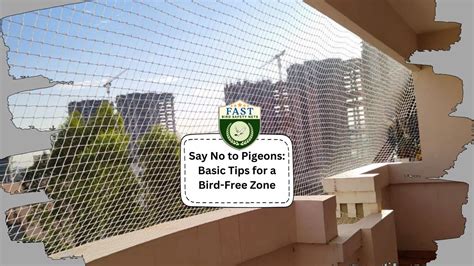Pigeon-Free Zone: Tips for a Clean Roof
Pigeons, while seemingly innocuous, can quickly become a significant nuisance. Their droppings are unsightly, corrosive, and can harbor harmful bacteria and parasites. A roof heavily soiled by pigeon droppings is not only aesthetically displeasing but also poses structural risks over time. This article provides comprehensive tips to help you create a pigeon-free zone and maintain a clean roof.
Why are Pigeons Attracted to Roofs?
Before tackling the problem, it’s crucial to understand why pigeons choose your roof in the first place. They are drawn to areas offering:
- Shelter: Overhangs, crevices, and gaps in roofing provide excellent protection from predators and the elements.
- Nesting materials: Loose debris, leaves, and even small building materials can be used for nest building.
- Food sources: Crumbs, seeds, and insects attracted to nearby areas can entice pigeons.
Understanding these attractions is the first step towards effective pigeon deterrence.
How to Deter Pigeons from Your Roof
Several methods can effectively discourage pigeons from roosting on your roof. The key is to create an environment that is less appealing to them while ensuring the safety and integrity of your roof.
1. Eliminate Food Sources
This seems obvious, but it's a crucial starting point. Ensure there's no readily available food around your home. Regularly clean gutters and remove any accumulated debris or seeds. Store birdseed and pet food securely indoors.
2. Remove Nesting Materials
Clear away any potential nesting materials, such as loose debris, leaves, or small twigs, from your roof and surrounding areas. This removes a key attraction for pigeons looking to build nests.
3. Seal Gaps and Crevices
Pigeons can squeeze into remarkably small spaces. Inspect your roof carefully for any gaps, cracks, or openings that might provide shelter. Seal these areas using appropriate materials, such as caulk or mesh netting.
4. Install Physical Barriers
Various physical barriers can deter pigeons. These include:
- Bird spikes: These are sharp, relatively harmless spikes that prevent birds from landing comfortably.
- Bird netting: This can be strategically placed to cover vulnerable areas, preventing access.
- Wire mesh: Similar to netting, wire mesh provides a physical barrier that pigeons cannot penetrate.
Remember to install these barriers safely and securely to avoid damaging your roof.
5. Use Reflective Materials
Pigeons dislike shiny, reflective surfaces. Consider installing reflective tape, strips, or even strategically placed mirrors near potential roosting areas. The glare and movement will deter them.
6. Employ Sound Deterrents
Ultrasonic devices emit high-frequency sounds that are unpleasant to pigeons but generally inaudible to humans. While their effectiveness can vary, they can be a helpful addition to other deterrent methods.
7. Consider Professional Pest Control
For severe infestations or if you're struggling to control the pigeon population, consider contacting a professional pest control service. They have specialized knowledge and tools to effectively and humanely remove pigeons and prevent their return.
What Happens if Pigeon Droppings Remain on the Roof?
Leaving pigeon droppings on your roof untreated can lead to several problems:
- Corrosion: Pigeon droppings are highly acidic and can corrode roofing materials over time, leading to costly repairs.
- Structural damage: The weight of accumulated droppings can damage the roofing structure.
- Health hazards: Droppings harbor harmful bacteria and parasites, posing health risks to anyone who comes into contact with them.
- Unsightly appearance: A roof covered in pigeon droppings is simply unpleasant to look at.
How to Clean Pigeon Droppings from Your Roof
Cleaning up existing pigeon droppings is crucial. Always prioritize safety. Never attempt to clean a roof that is unsafe to access. If you're unsure, hire a professional roofing cleaning service. When cleaning, wear protective gear, including gloves, a mask, and eye protection. Use a stiff brush and a solution of water and mild detergent to scrub the affected areas. Rinse thoroughly and allow the roof to dry completely.
Frequently Asked Questions (FAQs)
Are pigeons dangerous?
While generally not aggressive, pigeons can carry diseases and parasites. Their droppings are a significant health hazard, and direct contact should be avoided.
How often should I clean my roof?
Regular roof inspections are advisable. If you notice an accumulation of pigeon droppings, clean them promptly.
What are the long-term effects of pigeon droppings on a roof?
Long-term exposure to pigeon droppings can lead to corrosion, structural damage, and expensive repairs.
Are all pigeon deterrent methods effective?
The effectiveness of different methods varies depending on the specific situation and the severity of the infestation. A combination of methods is often the most successful approach.
Can I do this myself, or should I hire a professional?
Many of the prevention and cleaning methods can be handled by homeowners. However, for significant infestations, roof access issues, or extensive cleaning, hiring a professional is recommended.
By following these tips and regularly inspecting your roof, you can successfully create a pigeon-free zone and maintain a clean, safe, and attractive home. Remember that prevention is key; early action is crucial in preventing significant problems down the line.

